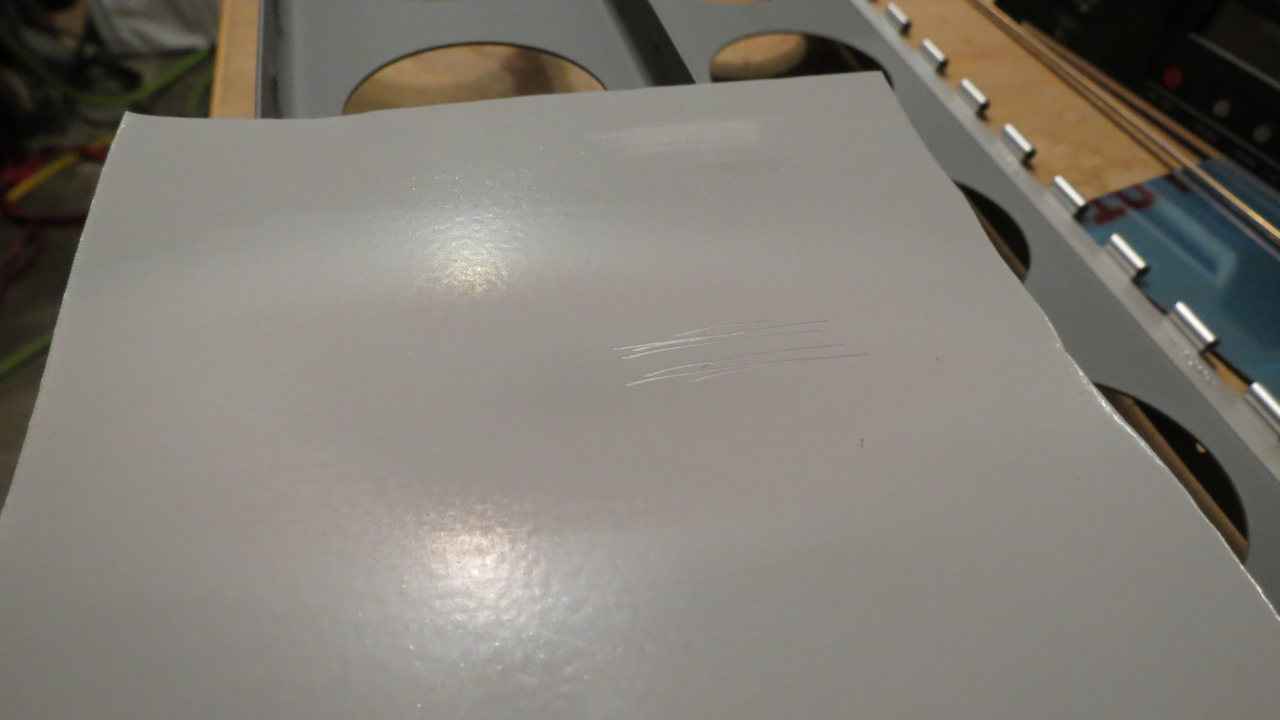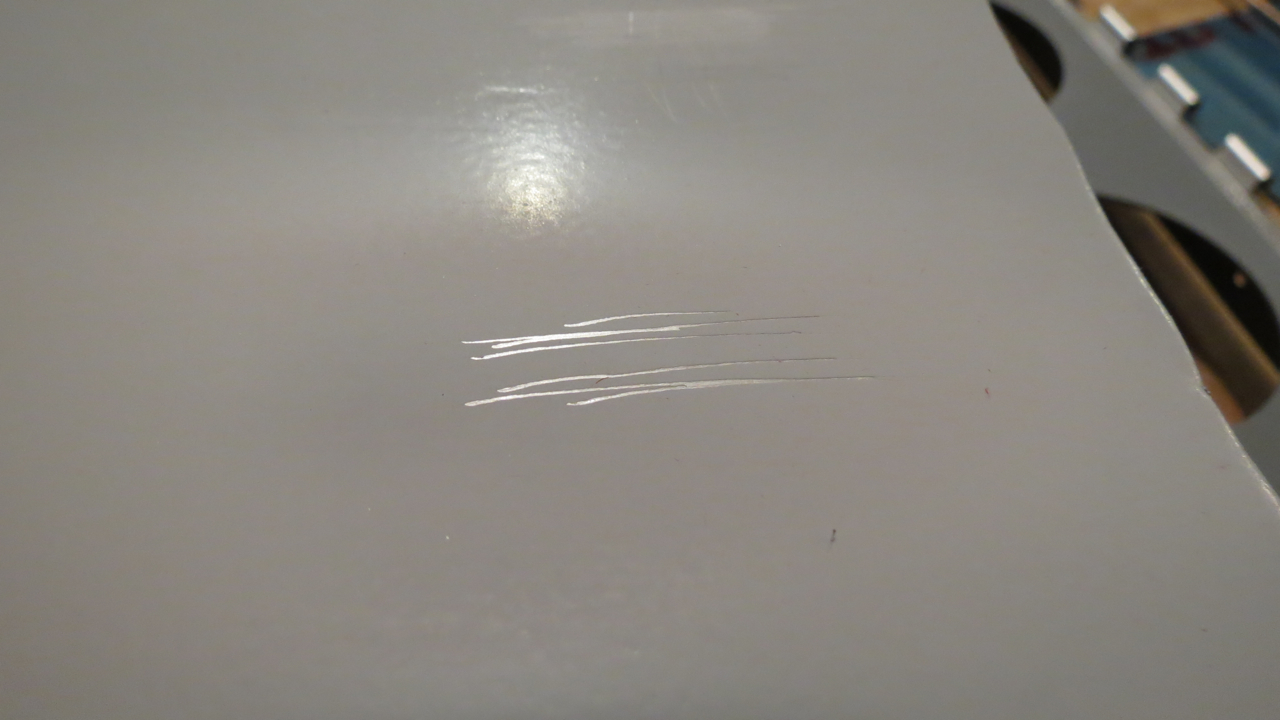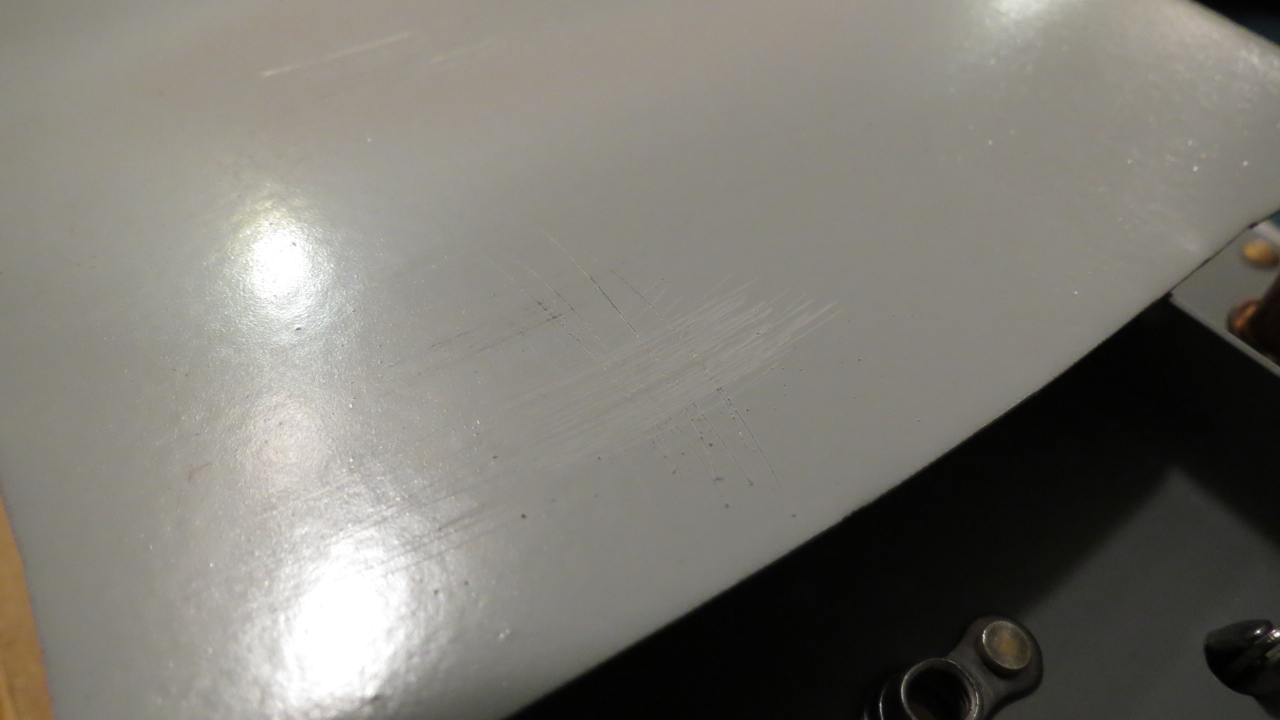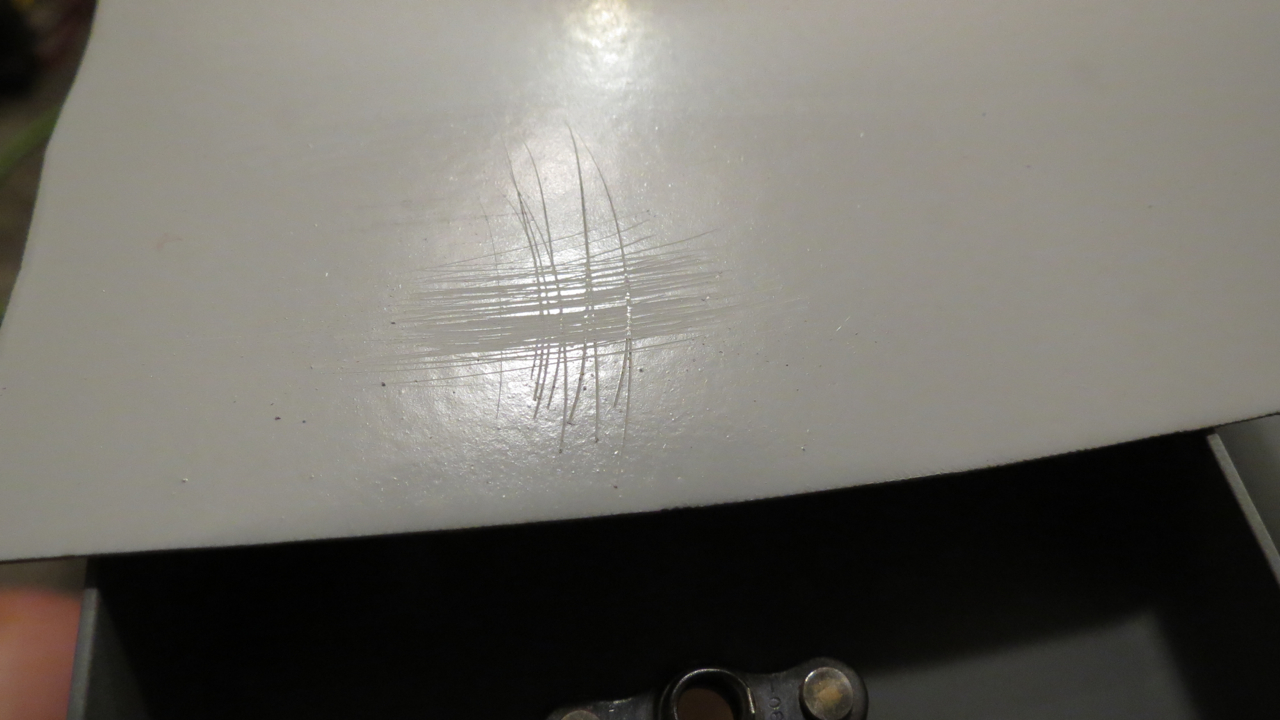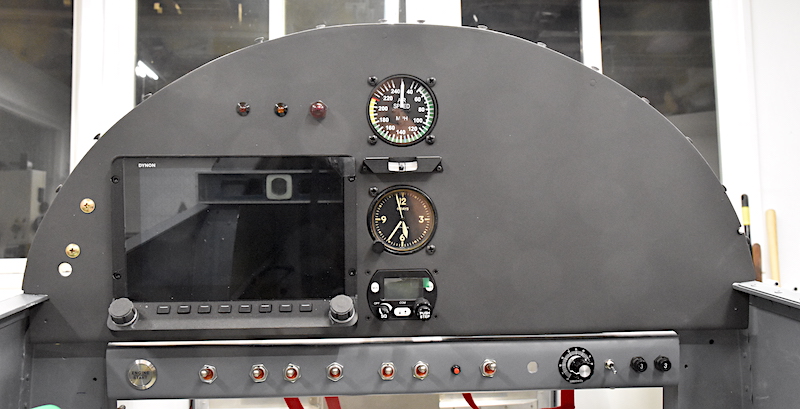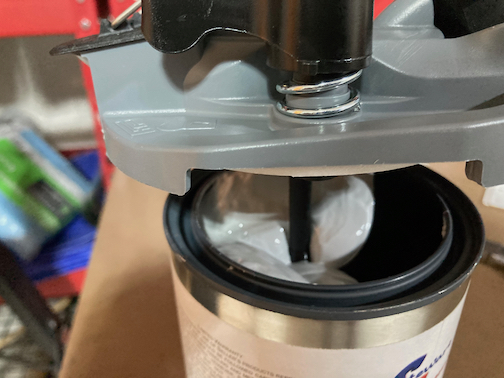N546RV
Well Known Member
Background: I'm currently in the final stages of major wing work; basically all I have left are the ailerons and flaps. Up to this point, I've been using rattle can primer; I started with Dupli-Color on the empennage and later switched to Napa 7220 with the wings.
With the fuselage kit on order, I got to thinking about some long-term decisions, most notably what I wanted to do for the interior of the plane. I also figured that at some point I should get comfortable using a spray gun, since it seems like a skill that may be needed once I get around to doing fiberglass work. Finally, I'd been intermittently reading about the products offered by Stewart Systems, and I was intrigued by the not-so-toxic stuff.
So after thinking it over quite a bit, I ordered a gallon of EkoPoxy in Smoke Gray. I considered getting a quart to start with, but I felt fairly confident that this stuff would be good enough that I'd end up using it. Even if I didn't feel it would work as a top coat for the interior, it'd have to be pretty crappy for me to not want to prime with it at all. I also bought a Grizzly LVLP spray gun from Amazon. I went with LVLP after comparing what my compressor was capable of vs. what most HVLP guns wanted.
Finally, last Saturday was D-Day. I tinkered with the gun a bit, first shooting water and then thinned latex paint to get a feel for controlling spray pattern and such, then I decided to cut some scrap into test patches, mix up a batch of primer, and try it out. The results were...acceptable. I got carried away on one test patch and made some nasty runs, but the others I got a fairly even finish, though there's definite orange peel texture. Still, the semigloss finish and color look nice, and I think it'd work great for the interior in terms of aesthetics.
The best of all my test patches:
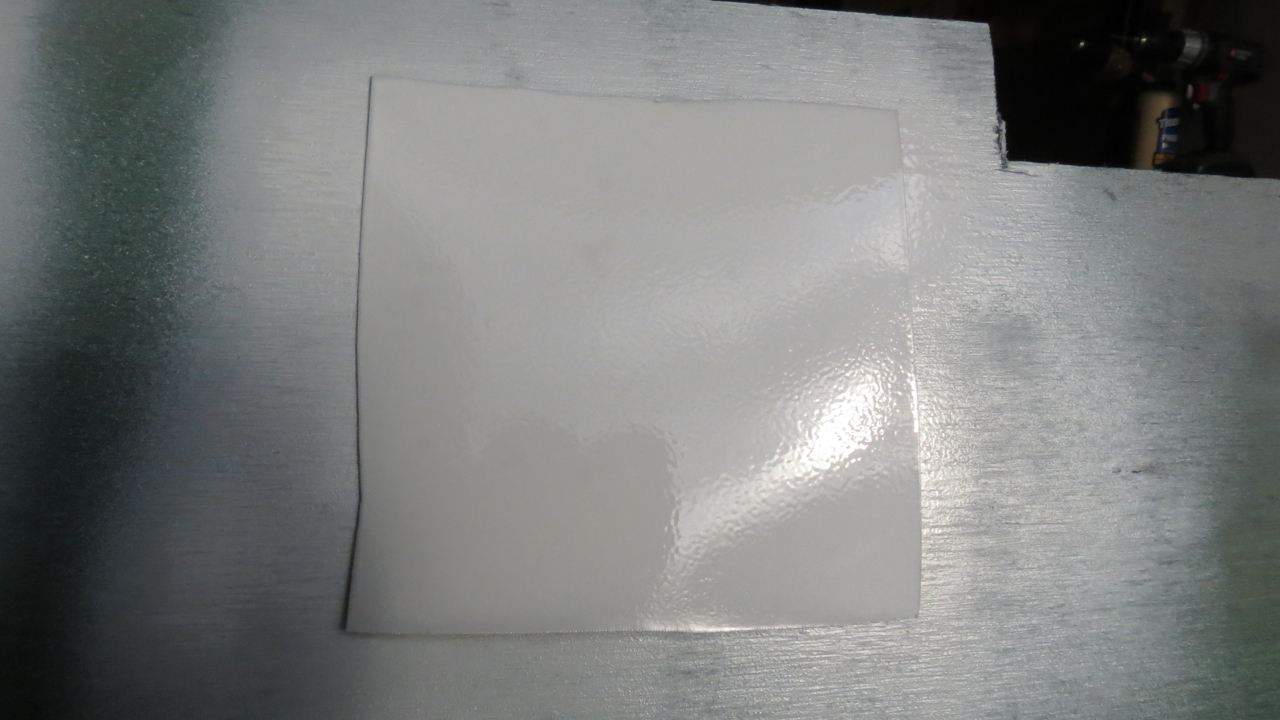
Tonight, after letting the patches cure for a few days, I did some durability testing. The first test was a brisk rub with an acetone-soaked shop rag. It was immediately clear that primer was being removed; the orange peel texture as well as the gloss vanished from the rubbed areas.
Upper portion of this patch is untouched; center area has been rubbed. Note the difference in gloss:
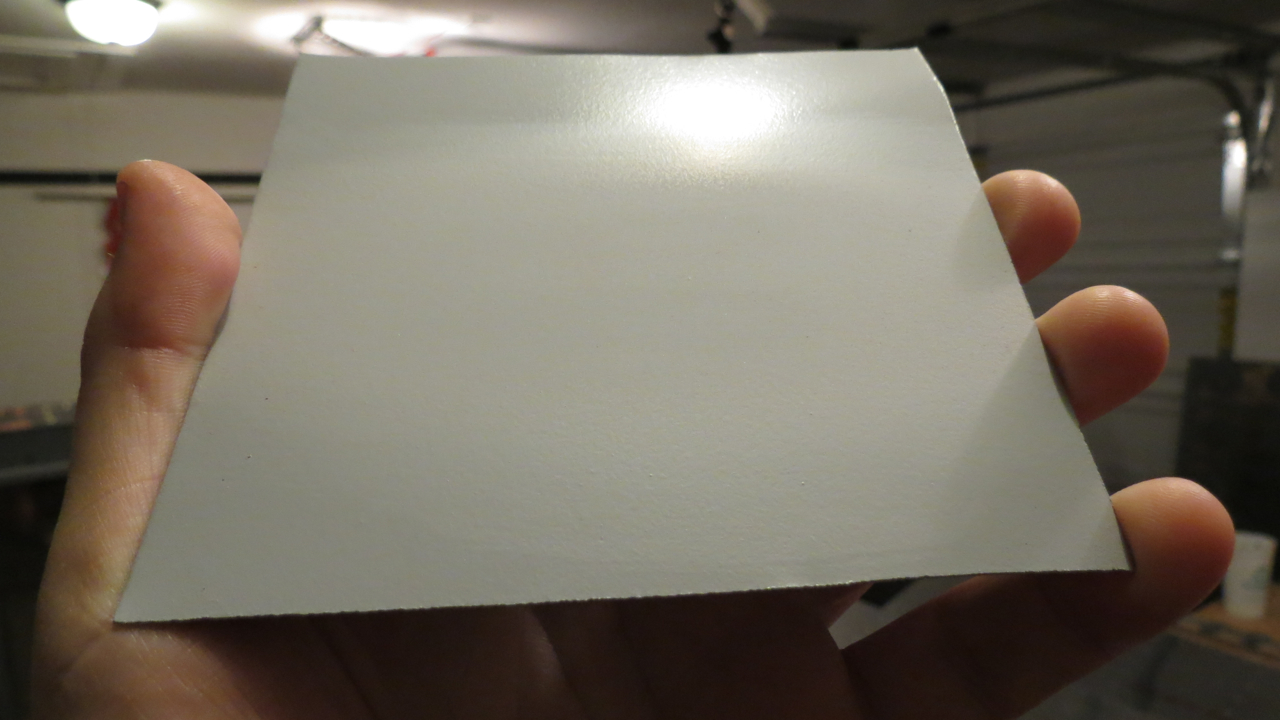
Ruboff on the shop rag:
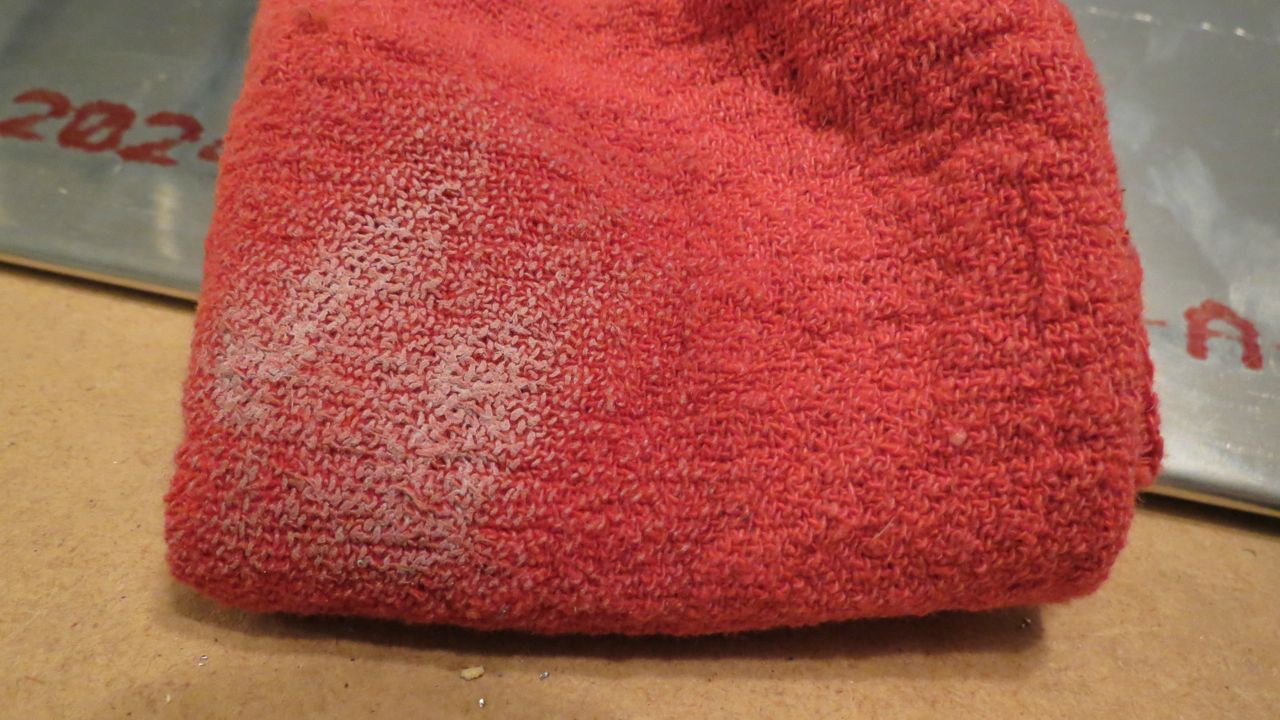
Next I went inside for some scratch testing with a thumbtack. The areas rubbed with acetone definitely seemed softer than the untouched parts; the scratch almost immediately showed bare metal, and a little back-and-forth scratching revealed a large area of Al. The area where I hadn't rubbed with acetone was tougher; light scratches were barely visible, and heavier scratches didn't seem to go right down to the metal. I was still able to get down to the metal with some concentrated back-and-forth scratching, though.
Scratch test results. Left side is acetone-rubbed area, right side is untouched. Note how much more metal I was able to reveal in the acetone-rubbed area:
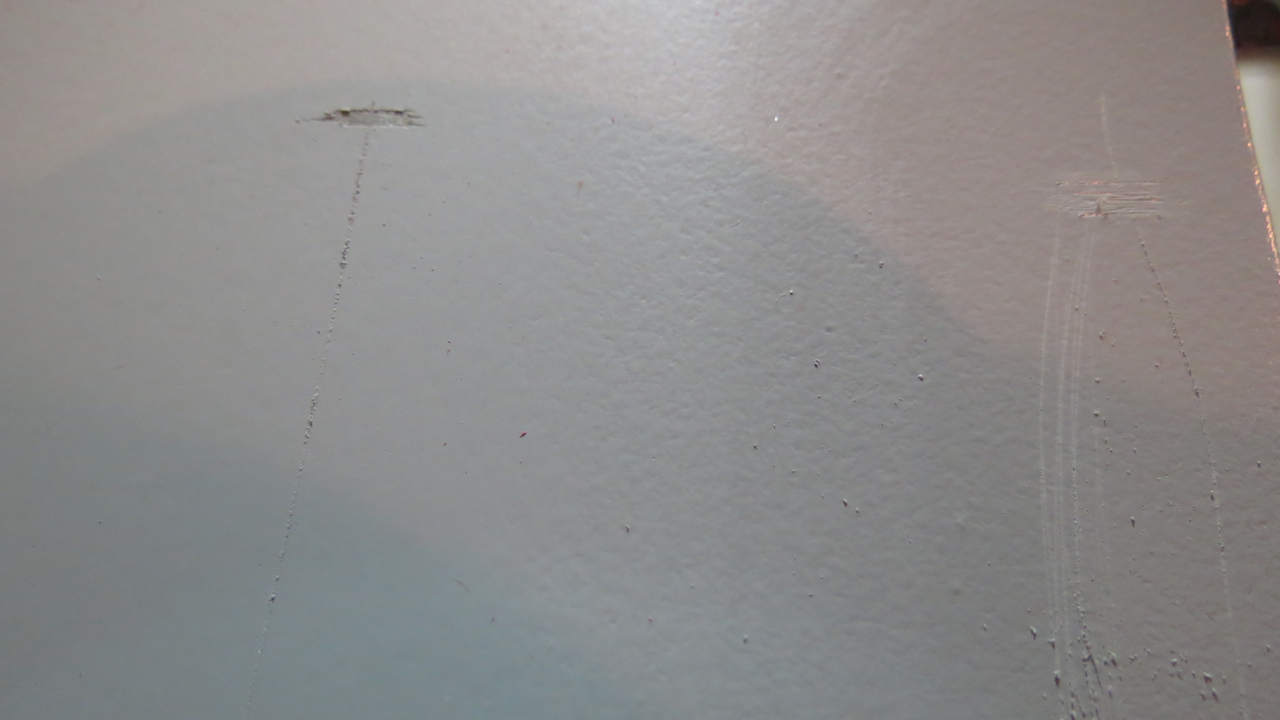
Finally, I went back out to the garage to do some more acetone rubbing. I suspected that with a little more attention, I could remove the primer entirely, and I wasn't wrong:
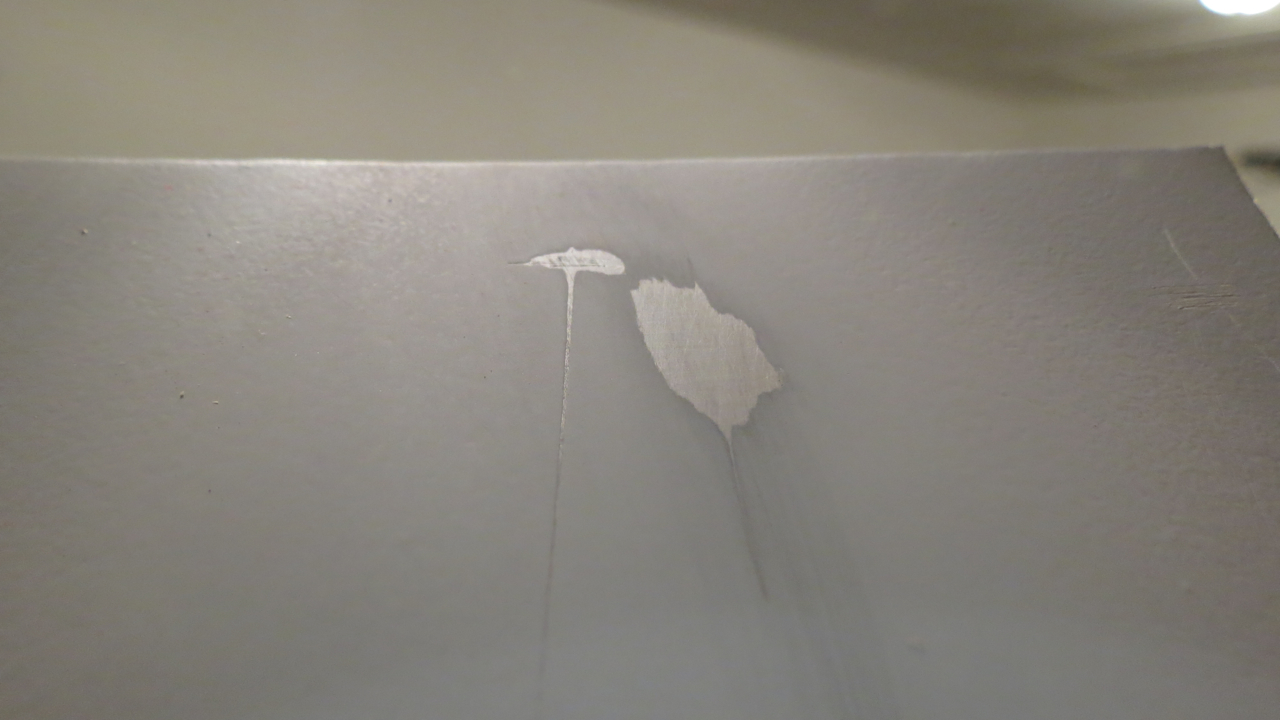
At this point, I'm wondering if the primer needs some more cure time. I looked a the can again, and I note that it says that after five days, the primer should be sanded before applying a topcoat. This leads me to believe that perhaps the primer isn't totally cured right now. (It's been about three days) Additionally, it's been unseasonably cold here in Houston, and these patches probably haven't been above 45F since Sunday afternoon. As such, I've moved the remaining three patches inside the house, where I'll let them sit for another 2-3 days before I do another series of durability tests. I'm hoping to see increased resistance to solvents and scratching.
Overall, right now I think this is still a decent candidate for an interior topcoat, though I worry about the solvent resistance. I don't plan on rubbing my interior with acetone, but who knows what I might spill or drip in there. Resistance to physical abuse is pretty good, perfectly suitable for interior use, I think.
Bottom line, if I see improved durability after a few more days of curing, I'll be good with this for the interior. If not, then I'll probably think about shooting a separate topcoat. We shall see.
With the fuselage kit on order, I got to thinking about some long-term decisions, most notably what I wanted to do for the interior of the plane. I also figured that at some point I should get comfortable using a spray gun, since it seems like a skill that may be needed once I get around to doing fiberglass work. Finally, I'd been intermittently reading about the products offered by Stewart Systems, and I was intrigued by the not-so-toxic stuff.
So after thinking it over quite a bit, I ordered a gallon of EkoPoxy in Smoke Gray. I considered getting a quart to start with, but I felt fairly confident that this stuff would be good enough that I'd end up using it. Even if I didn't feel it would work as a top coat for the interior, it'd have to be pretty crappy for me to not want to prime with it at all. I also bought a Grizzly LVLP spray gun from Amazon. I went with LVLP after comparing what my compressor was capable of vs. what most HVLP guns wanted.
Finally, last Saturday was D-Day. I tinkered with the gun a bit, first shooting water and then thinned latex paint to get a feel for controlling spray pattern and such, then I decided to cut some scrap into test patches, mix up a batch of primer, and try it out. The results were...acceptable. I got carried away on one test patch and made some nasty runs, but the others I got a fairly even finish, though there's definite orange peel texture. Still, the semigloss finish and color look nice, and I think it'd work great for the interior in terms of aesthetics.
The best of all my test patches:

Tonight, after letting the patches cure for a few days, I did some durability testing. The first test was a brisk rub with an acetone-soaked shop rag. It was immediately clear that primer was being removed; the orange peel texture as well as the gloss vanished from the rubbed areas.
Upper portion of this patch is untouched; center area has been rubbed. Note the difference in gloss:

Ruboff on the shop rag:

Next I went inside for some scratch testing with a thumbtack. The areas rubbed with acetone definitely seemed softer than the untouched parts; the scratch almost immediately showed bare metal, and a little back-and-forth scratching revealed a large area of Al. The area where I hadn't rubbed with acetone was tougher; light scratches were barely visible, and heavier scratches didn't seem to go right down to the metal. I was still able to get down to the metal with some concentrated back-and-forth scratching, though.
Scratch test results. Left side is acetone-rubbed area, right side is untouched. Note how much more metal I was able to reveal in the acetone-rubbed area:

Finally, I went back out to the garage to do some more acetone rubbing. I suspected that with a little more attention, I could remove the primer entirely, and I wasn't wrong:

At this point, I'm wondering if the primer needs some more cure time. I looked a the can again, and I note that it says that after five days, the primer should be sanded before applying a topcoat. This leads me to believe that perhaps the primer isn't totally cured right now. (It's been about three days) Additionally, it's been unseasonably cold here in Houston, and these patches probably haven't been above 45F since Sunday afternoon. As such, I've moved the remaining three patches inside the house, where I'll let them sit for another 2-3 days before I do another series of durability tests. I'm hoping to see increased resistance to solvents and scratching.
Overall, right now I think this is still a decent candidate for an interior topcoat, though I worry about the solvent resistance. I don't plan on rubbing my interior with acetone, but who knows what I might spill or drip in there. Resistance to physical abuse is pretty good, perfectly suitable for interior use, I think.
Bottom line, if I see improved durability after a few more days of curing, I'll be good with this for the interior. If not, then I'll probably think about shooting a separate topcoat. We shall see.



